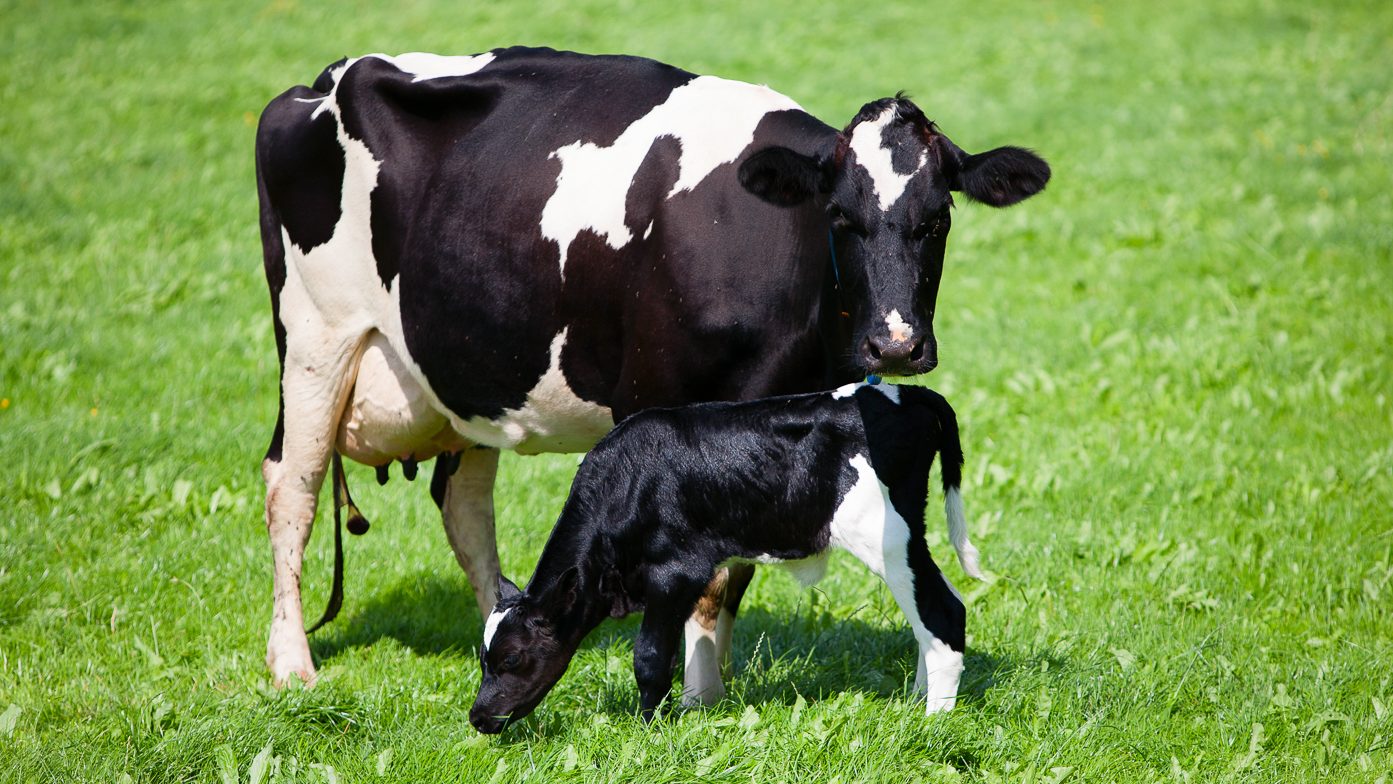
Nutrition and management during the transition period are important, but success is set several months in advance.
When we speak about a season, we would normally say it starts on 1st August along with calving and it finishes on the 31st May at dry off. But we actually like starting our season on 1st January, preparing the cow during late lactation, in a similar way to training an athlete to run a marathon. Then during the transition period, we make sure everything is in order, and we make the necessary adjustments to avoid problems – just the same way that an athlete does with his diet and taking care of his muscles ahead of a race. As a result of all this preparation, we will have each cow peaking at a great level, just like the athlete winning the race!
The main factor undermining the productivity of the dairy cow is ‘the neglect of the preparation of the cow for her next lactation period’. There are several components to a successful transition across calving, but pre-calving body condition score (BCS), the way in which the cow’s BCS is achieved in autumn, the pre-calving dietary mineral concentration, and the amount of feed the cow consumes in the weeks before calving are the determinant factors.
From one month before calving, cows should be checked twice weekly for signs of springing and then separated into a springer mob. If BCS 5 or greater, cows should be fed to consume 80% to 90% of their requirements. If less than BCS 5, cows should be fed to consume 100% of their requirements.
Do not overfeed springing cows. Excessive feeding of pre-calving cows will result in greater BCS loss, reduced feed intake, udder oedema and increased risk of metabolic disorders post-calving.
The composition of feeds and amount being fed can affect the mineral composition of the diet, which is important to consider for metabolic disorders.
Prior to calving, cows require approximately 12% of their diet as crude protein.
Thin and fat cows should be preferentially managed during late lactation and during the non-lactating period
Milk fever is a multifactorial disease, making it difficult to isolate a specific cause.
Magnesium supplementation pre-calving significantly reduces the incidence of milk fever. Similarly, restricting the energy intake of springer cows increases blood calcium on the day of calving.
Cows suffering from clinical milk fever produce 14% less milk, while cows with sub-clinical milk fever produce 7% less milk.
The dairy cow obtains calcium from her diet or from stores in her bones. Although there are substantial amounts of calcium available from these sources, the absorption from the intestines or resorption from bone is under tight hormonal control and is affected by other minerals (e.g. phosphorus and magnesium) and vitamins (e.g. vitamin D).
In order of importance, minerals should be looked at in the following order: 1. magnesium 2. calcium 3. potassium 4. phosphorus
As a rule of thumb, dry cows require 0.4% magnesium in the diet for two to three weeks pre-calving, while lactating cows require 0.3% magnesium for four months post-calving.
So, a 500kg cow, eating 10kg DM will require 40g Mg.
Normally winter grass supplies ~ 0.2% DM, which means 20g Mg. Therefore, additional input is necessary to supplement another 20g Mg. There are different ways to do it: magnesium oxide, magnesium chloride, and magnesium sulphate. Every system must find the best way to make sure the cows are getting enough Mg down the throat.
Things to consider:
Dusting with MgO, the amount offered should be doubled, and in wet weather tripled.
Adding minerals to feed, typical wastage for the feeding method needs to be accounted for (e.g. 5% to 10% wastage for automated in-shed feeding, 10% for feed pads, 15% for trailers and 40% to 60% for silage fed in the paddock).
It must be noted that it is difficult to supply enough magnesium using magnesium chloride or sulphate through drinking water, and high doses can reduce the palatability of water causing cows to stop drinking.
A combination of magnesium supplements can be used.
All cows should receive supplementary calcium after calving. 100g to 300g of lime flour, depending on the cases, will supply enough calcium to avoid deficiencies.
Other factors influencing the incidence of milk fever:
So generally, for many dairies, improving transition management could significantly improve production, reduce culling and death, and reduce the incidence of disease.
It is important to keep potassium levels below 4.5% DM. Potassium interferes with the absorption of magnesium in the rumen, so it can contribute to milk fever. Therefore, it is important to avoid grazing effluent paddocks pre-calving.
The cows need between 0.25% and 0.45% DM of phosphorus. Excessive levels can interfere with the production of vitamin D. As vitamin D is required for calcium absorption from the diet, this increases the risk of milk fever
A phosphorus deficiency close to calving can also contribute to milk fever. Some feeds contain very low levels of phosphorus. This is the case of the fodder beet which contains around 0.2% DM as phosphorus. In this case, it is advisable to supply supplementary phosphorus to these cows.
There are ways to estimate the economic potential of improvements.
a. Types of economic impact:
b. For a defined disease, estimates can be made about the cost of a single case:
c. The total cost for all cases (if good records are kept) can then be based on incidence of the disease.
d. Cost of a case of metritis (endometritis in New Zealand):
e. Costs associated with metabolic diseases:
f. Costs of clinical mastitis.
g. Costs of death and culling.
h. Costs of lameness.
Farm owners, contract milkers and share milkers must work constantly to find ways to improve the transition period.
< 5% of milking herd should leave the dairy before 60 days in milk.
< 3% should die before 60 days in milk.
Written by Nicholas Imas – Centre for Dairy Excellence